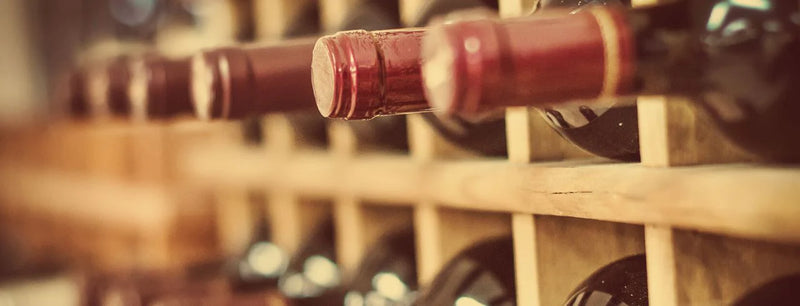
Barbera d'Asti vs. Barbera d'Alba
Bar-bear-ah
Parents & Origin: Barbera (Northwest Italy) Grape: Small, glaucous, deep red Flavors: Cherry, strawberry, plum, blackberry Notable Regions: Italy (DOCG and DOC regions), Australia, California Sweetness: Dry Body: Full
Tannins: Low Acidity: High ABV: 13-15%
The History of Barbera
Barbera is one of Italy’s most prominent grape varietals, originating on the slopes of the Piedmont region, which similarly made famous the Nebbiolo grape. While Nebbiolo yields are mostly reserved for the high-tier Barolo and Barbaresco wines, Barbera is often known as “the people’s wine” among locals due to its affordability and longstanding tradition within the area.
Barbera has been noted in Italy since at least the 13th century. Most believe that the grape originated in Casale Monferrato in Piedmont, though one prominent researcher claims that its origin was in the Lombardy town of Oltrepó Pavese. DNA evidence also suggests that Barbera may be related to the Mourvedre grape of France and Spain. Regardless of its exact origin, the Barbera grape quickly became a popular varietal among Italians. The original region favored for Barbera production was Asti, an area that remains the only DOCG-classified Barbera region, though many other regions around Piedmont produce Barbera, such as the Barbera d’Alba DOC.
Italian immigrants in the 19th and 20th centuries transported Barbera vines to countries such as Australia and the United States, where the varietal has been grown in limited quantities ever since. Barbera had a hard time catching on internationally, both due to the favorability of other wines and due to bad publicity from a 1985 incident in which many Italians were injured due to methanol contamination within Barbera wines. In the 21st century, however, Barbera has made quite a comeback and has burst into the international market as an affordable challenger to the best Italian wines.
Interesting Fact: Barbera is unique in that it appears to be a rich and dark-colored wine, despite offering a relatively light taste on the palate. This is mainly due to the dark staining pigments found within the Barbera grape that dye the wine to near-black.
Barbera Food Pairings
Due to its unique combination of low tannins and high acidity, Barbera can be an exceptionally versatile wine when paired with food.
The Best Barbera Food Pairings
Barbera pairs perfectly with rich foods, such as cheeses, meats, and earthy mushrooms—for example, a mushroom pizza with truffle oil.
Food Pairings to Avoid with Barbera
Barbera is light enough to stand up to dishes such as risotto or pasta, but as with any red wine, seafood, and very light or sweet dishes are likely not ideal.
Barbera Tasting Notes
All Barbera wines are made from predominantly Barbera grapes, which are typically grown on the lower slopes, which offer cooler temperatures compared to the Nebbiolo grown on higher hillsides. Barbera can be enjoyed young or old, with younger wines offering higher acidity and more pronounced fruit. Many winemakers prefer aging Barbera in small oak barrels to both soften the acidity and add a slight hint of oak spice. Either way, Barbera is a wine that offers aromas of violet, lavender, incense, vanilla, and nutmeg on the nose, with bold flavors of red fruit (cherry, raspberry, strawberry) and black fruit (plum, blackberry).
Barbera d'Asti
Barbera d’Asti is the term used to describe wine from the Asti province of Piedmont. This area is known as the historical center of Barbera winemaking and thus deservedly produces some of the best varietal wines, with the Italian government granting it DOC designation in 1970, followed by DOCG designation in 2008. Under DOCG regulations, Barbera d’Asti must utilize at least 90 percent Barbera grapes (with the rest being either Freisa, Grignolino, or Dolcetto), with at least 11.5 percent alcohol. Nizza, one of Asti’s subregions, has the most stringent DOCG regulations, including a higher alcohol content and a significant oak aging period. Compared to other Barberas, Barbera d’Asti is known for its relative brightness in color, elegance, and full yet refined body.
Barbera d'Alba
Another highly important Barbera region is located around the town of Alba. Barbera d’Alba is produced in much lower quantities than in Asti, as winemakers in Alba tend to dedicate more vineyard space to the ever-popular Barolo and Barbaresco wines. However, the unique flavors of Barbera d’Alba establish it as a prominent wine in its own right, leading the region to gain DOC classification from the Italian government. Compared to Barbera d’Asti, Barbera d’Alba tends to have a darker color, fuller body, and more intense and tangy fruit flavors.
Growing Barbera
The Barbera grape is a robust varietal that can produce very high yields, though most of the best wines come from carefully managed vineyards where grapes are kept in small clusters and harvested in small batches. The soils of the Piedmont region also play a role in Barbera’s quality: the vineyard sites' calcareous, loam, and sandy soils are ideal for permitting the grapes to thrive while maintaining a low yield.
Barbera in a Nutshell
Since the early origins of Barbera, this grape varietal has flown consistently under the radar throughout the history of Italian winemaking simply due to the nearby presence of rival grapes. However, a recent resurgence of appreciation has established this varietal as a delicious, affordable, and elegant Italian wine. Whether it has the bright and refined flavors of Asti, the intense and powerful taste of Alba, or anything in between, a bottle of Barbera is sure to complement any rich meal, including meats, cheese, and mushrooms. Barbera’s notes of red and black fruit come together in a way that is light and rich at the same time, making this a unique must-have for your wine collection.





